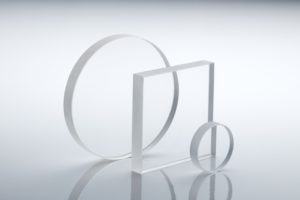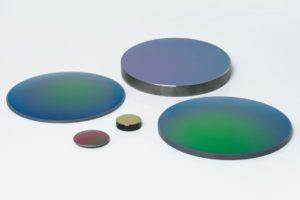Infrared Lasers: A Guide to Choosing and Customising Optical Components for Maximum Performance
22nd Mar 2019The defence sector for example uses a variety of IR lasers for intelligence, surveillance, target tracking and target acquisition. Without IR lasers, crucial night time operations would simply not be possible.
Outside of defence, infrared lasers are employed in a diverse array of settings. From communications and law enforcement through to security, manufacturing, research, medical and spectroscopy, IR lasers have transformed a vast number of processes.
In manufacturing, IR lasers have replaced traditional methods of cutting, welding and drilling, saving industry considerably both financially and in terms of power consumption and time efficiency. Infrared spectroscopy is another transformational technology, used widely in quality control, monitoring and measurement as well as forensic analysis and gas leak detection.
The infrared laser is clearly a heavily depended upon technology.
What optical components are used in infrared lasers?
Infrared lasers are dependent themselves on a number of optical components. These components are selected for their ability to deliver on accuracy and performance, and for their robustness in the typically challenging conditions that infrared lasers face.
Some of the most popular optical components for infrared laser applications include high grade, premium efficiency antireflective lenses including doublet and meniscus lenses; cover windows optimised for applications in both mid wave and long wave IR spectra; high reflectivity mirrors; beamsplitters; beam expanders; prisms, optical filters and aspheric types.
Customisation of optical components to suit specific application and environmental demands is becoming a fairly standard demand, as laser instruments are growing increasingly sophisticated and niche.
Customisation includes edging to smaller diameters and alternative shapes as well as crafting with apertures to suit particular application design, together with polishing and fire polishing, and diamond turning. In addition, the application of antireflective coatings improves transmission; hydrophobic coatings deal with the effects of pollution, and thermal toughening and dielectric over-coating increase durability.
What are the most popular materials used in infrared laser optics?
Infrared laser optical components have to stand up to a great deal, from thousands of high intensity laser pulses through to major atmospheric and environmental challenges. Robust, thermal and chemically tolerant materials are crucial if these components are going to take everything that is thrown at them.
Sapphire, often used to make protective windows, is a highly robust material, second only in natural hardness to diamond. It can resist abrasion; withstand temperatures up to 2030 Celsius and remains unaffected by most chemicals.

Germanium is a high density material, ideal for transmitting infrared whilst blocking UV and VIS wavelengths. It offers the highest refractive index of IR-transmitters with low optical dispersion.

Magnesium fluoride offers excellent transmission into the mid-infrared. This is another robust material, resistant to laser damage and thermal and mechanical shock.
Calcium fluoride is often used to create windows for spectroscopy applications. It has a high damage threshold, making it perfect for laser applications. Components made from this material do not generally need an antireflective coating thanks to its low refraction.
Barium fluoride is a common substrate used in infrared spectroscopy, offering wide broadband transmission from deep ultraviolet right through to long wave IR, without the need for antireflective coatings.
Fused silica is a widely used material in the manufacture of lenses, mirrors, windows, prisms and beamsplitters. It is often the material of choice for precision grade optics thanks to its consistency of performance. It also presents excellent chemical resistance. IR grade fused silica offers high transmission throughout the NIR spectrum.
The most important consideration is that optical component customisation should be undertaken to meet the unique parameters of the application and its operating environment.
Working alongside a skilled optical industry consultant to ascertain wholly individualised precision solutions is the best advice any IR laser manufacturer can take.
Guaranteed Quality through Metrology
Scrupulous measurement and testing of optical components is unquestionably vital. Precision compliance with the specifications that have been established as essential for your IR laser application optics is made possible courtesy of expert metrology.
Combining the ultimate in state of the art metrology instruments with top class industry expertise and an in-depth understanding of the specific needs, objectives and challenges of the optical application will guarantee the highest levels of quality and performance.
Optical component specialists for infrared laser applications
Knight Optical has been known as a leading name in the custom design of precision optical components for almost three decades. Our technical expertise traverses every aspect of custom optical component design and engineering.
Our state-of-the-art metrology laboratory is considered one of the very best in the industry, and our highly skilled metrology technicians are on hand to share an abundance of in-depth knowledge.
Should you wish to discuss your individual optical component requirements for any infrared laser applications, our experienced, multilingual sales team and helpful technical experts are at your service.
For tailored advice on all your infrared laser optical component requirements please call us on 01622 859444 or email [email protected].